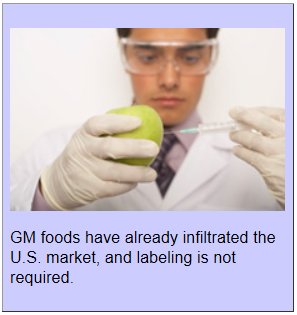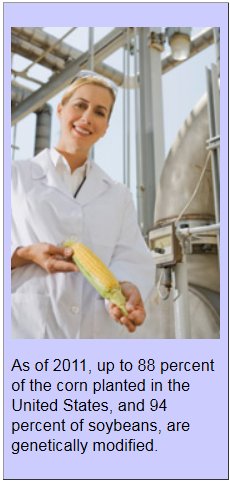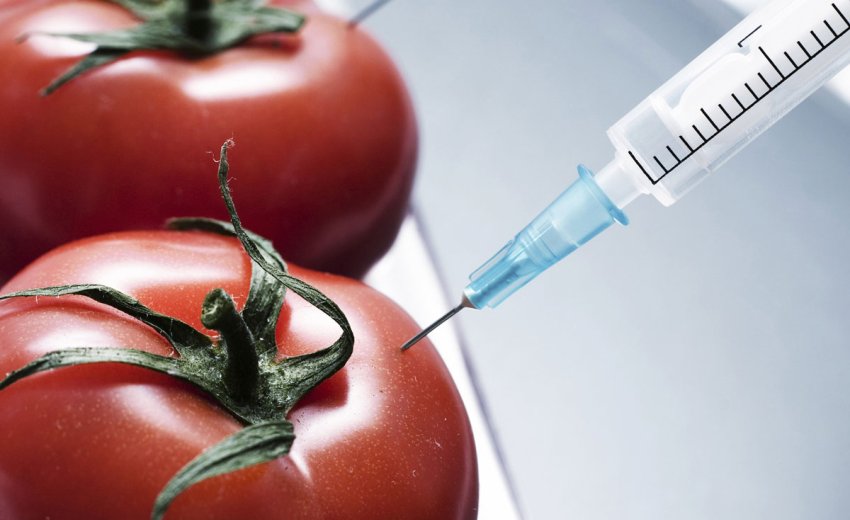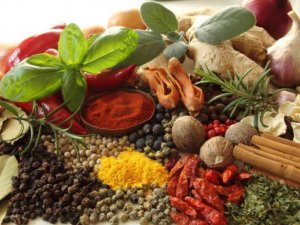Are There Dangers of Genetically Modified Foods?
©2015 Health Realizations, Inc. Update
For years grocery shoppers have been buying and eating genetically modified foods whether they knew it or not. At first even people who did know they were eating genetically modified food didn't worry about it because they saw no reason to. But as more information from scientific studies has reached consumers, more people are beginning to wonder if some medical problems might be linked to the consumption of these foods.
 For any scientific endeavor to be in the best interest
of society the benefits must outweigh the
disadvantages. There are supposed advantages with
genetically modified food, but some research is
suggesting the disadvantages may win out in the
long run.
For any scientific endeavor to be in the best interest
of society the benefits must outweigh the
disadvantages. There are supposed advantages with
genetically modified food, but some research is
suggesting the disadvantages may win out in the
long run.
The Basic Principles of Genetic Modification
Broadly speaking, there are two ways that a food crop can be genetically modified. The first method has been around since our ancestors first began to actually grow food instead of just foraging for it.
That method is usually called cross-breeding. You find the individuals of a specific plant that have more of a characteristic that is desirable -- say, more and bigger berries. Take the seeds from those plants and grow them close together so that the pollen from one fertilizes others. Pick the individuals from that group of plants that have the biggest and most berries and plant only the seeds from them.
If you repeat this process over and over, you can eventually end up with a whole new strain of the plant, one that produces significantly more, bigger berries than the plants you started with. Individual farmers, and more recently seed companies, have been breeding in certain characteristics and breeding out others for centuries. Some of the changes that have been made result in food that can:
- Resist insects and plant diseases
- Increase the amount of protein produced
- Grow faster, and grow better under a wider range of conditions
- Increase the yield of the crop
- Last longer after being harvested
- Withstand shipping better
The process of cross breeding is an example of human beings actively participating in and contributing to the evolution of plants. In this case, humans are working only with the natural variations in the characteristics of the plant.
The more modern method for genetically altering foods is different in two ways.
- It doesn't involve seeds, pollen, or cross breeding.
- It allows scientists to insert traits that were never a natural part of the plant being modified.
Instead of cross-breeding plants, scientists go directly to the source behind a plant's traits—DNA. The genes that code for desirable characteristics are cut out of the DNA of one plant or other organism and spliced into the DNA of another plant that does not possess that desirable trait.
While cross-breeding requires that the plants be closely related, genetic modification can be done with totally different plants, and even different organisms. For example, if a type of fungus has the ability to tolerate exposure to sub-zero temperatures, that trait will be located somewhere in the genetic makeup of the fungus. In theory at least, if scientists can isolate the DNA for that trait and then inject it into the gene coding of a plant, that plant will also be able to withstand low temperatures ... but there may be unknown consequences - both to the environment and to human and animal health -- to mixing DNA in this way.
Why Are Genetically Modified Foods Grown?
 Scientists involved in the genetic modification of crops report
the following benefits of genetically altered foods:
Scientists involved in the genetic modification of crops report
the following benefits of genetically altered foods:
- Lower cost and higher yields
- Food that can help combat protein malnutrition in developing countries
- The need for less pesticide in the environment and food chain
- The ability to grow more food locally in areas with poor growing conditions
In addition to the idealistic goals of ending world hunger, genetically modified food is heralded as providing a number of benefits in countries that already possess advanced crop-growing knowledge and technology. However, opponents say that GM foods may actually be less nutritious, toxic and allergenic, and may cause damage to the environment, require more pesticides and may even offer worse yields. The debate over whether or not GM foods are safe continues to rage on as well, especially considering safety data is limited at best.
As stated by the Non-GMO Project:
“In 30 other countries around the world, including Australia, Japan, and all of the countries in the European Union, there are significant restrictions or outright bans on the production of GMOs, because they are not considered proven safe. In the U.S. on the other hand, the FDA approved commercial production of GMOs based on studies conducted by the companies who created them and profit from their sale.”
Are There any Risks Associated with Eating Genetically Modified Foods?
The disadvantages associated with genetically modified food continue to surface, even though the foods are already widespread in the United States. They are related not only to the health of the people who consume them, but also to the environment.
A major method of controlling insect pests uses toxins produced by species and
subspecies of the Bacillus genus of bacteria. Most of the toxins come from the
thuringiensis species. Collectively, these toxins are usually called "Bt" toxins -- Bt for
Bacillus thuringiensis. Are you wondering why you need this boring lecture on bacteria?
You'll understand soon.
The Bacillus bacteria produce a variety of toxins that will kill an equally wide variety of insect pests. Some affect almost any type of insect that ingests them, and others kill only one or two species. The bacteria are grown in vats and the toxins are harvested and sprayed on the plants that need protection. The discovery of Bt toxins and the technology to use them effectively has been a boon to the agricultural industry.
Some companies thought that there might be an even better way of using Bt toxins. Instead of growing the bacteria that make the toxins, they have used genetic modification to give crop plants the ability to make the toxins themselves. On paper, it sounds good. The toxins usually don't hurt the plants and the pests are well-controlled.
Originally, researchers claimed that Bt toxins in food were safe because the toxins are destroyed by the acid in your stomach. Now researchers are saying this isn’t the case and that Bt toxins can get into the blood of people who eat certain genetically modified foods.
While men are just as susceptible as women, most research related to genetically modified plant toxins has been done exclusively on pregnant women. One study found that 93% of the women who gave blood samples showed traces of Bt toxins in their bloodstream, as did 80% of unborn babies tested through their umbilical cord.
So far, the only sure thing that researchers know is that the toxins can survive the digestive process to make it into the blood. However, there are plenty of theories about the long-term effects these toxins may have.
The most severe theoretical effects involve unborn children, who may be born with deformities, or be miscarried before they come to term. Adults exposed to toxins through the consumption of genetically modified crops may develop severe allergies or even cancer.
How to Protect Yourself and Your Family Against the Possible Dangers of Genetically Modified Food
While no one knows for sure how these toxins might affect you, even the staunchest proponents of genetically modified food agree that having these toxins in your blood can't be a good thing.
Here are a couple of things you can do to minimize the threat:
- Eat organic food whenever possible (organic food does not contain GM ingredients by definition, although cross-contamination with GM seeds in the environment is a problem - and can and does occur). You can also ask your health care practitioner about the whole-food multivitamins which can encourage healthy cell functioning and adds vital nutrients to your diet.
- Get involved with political movements calling for labeling on all products that contain genetically modified ingredients.
How do I Find Non-GM Food in the United States?
In these early years of the 21st century, organic food has become more than a passing trend; it is a way of life for people looking for alternatives to the widely-grown GM food, and to food grown with synthetic fertilizers and pesticides.
Organic farming is the fastest-growing segment of agriculture in the United States, and in 2008, about 2.7 million acres of U.S. cropland were dedicated to organic farming. Still, it might be difficult for you to find organic and non-GM food where you live.
Larger communities usually have organic options in grocery stores, and some towns have organic farmers’ markets available to the public at least once a week. In smaller towns, your only option might be what's on the grocery store shelves, so another option is to grow your own organic food at home. If you have a little extra time and some space in your backyard, you can become your own organic grocer.
And what if you don't have a yard? A little research online or in the library will give you all sorts of ideas for container gardening, which will help you turn your deck into an organic garden. And what if you don't even have a deck? Some communities have started setting up farming plots on public land for residents to use. Check with your local extension agent to see if there are plots available where you live.
Keep in mind, too, that processed foods and fast foods are very likely to contain GM ingredients, so focusing your diet on whole foods will help you cut down on your exposure to GM ingredients.
How to Help Limit the Impact of Genetically Modified Food
Currently there is concern that GM crops could cross-contaminate non-GM crops, ultimately making even non-GM organic foods virtually impossible to come by. So, the best way to limit your exposure to genetically modified food is to get involved in creating public policy that will regulate production, use, and sale of it. The Non-GMO Project is a good place to start to find out how you can get involved.
Sources
Mail Online: GM Food Toxins Found in the Blood of 93% of Unborn Babies
University of Cincinnati Clermont College: Hazards of Genetically Modified Crops and Foods
Virginia Cooperative Extension. Knowledge for the Commonwealth: The Insect Pathogen Bacillus thuringiensis. A Bt Primer: Adapted from R. Weinzerl. et al.
United States Department of Agriculture Economic Research Service: Data Sets: Organic Production
The Non-GMO Project: Consumers
The Non-GMO Project. Freguentlv Asked Questions
United States Department of Agriculture. Economic Research Service “Adoption of
Genetically Engineered Crops in the U.S.”





